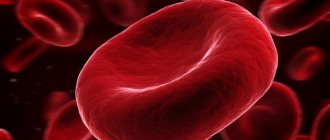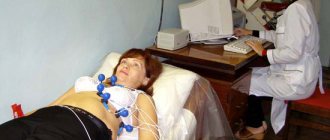Reception is strictly by appointment only!!!
Doctor Plus LLC License No. LO-77-01-004801
Registration at the clinic by phone
Make an appointment at the clinic
- +7 (495) 125-49-50
- Addresses of clinics in Moscow
- Daily
- call me back
Acetone in urine
- this phrase means the identification of ketone compounds in the test results. Ketones are the result of metabolic processes in the liver. In a healthy person, they are present in such small quantities that they do not affect the results of laboratory tests of urine. With impaired metabolism, the synthesis of ketone compounds in the liver increases, which leads to the occurrence of diseases.
Ketone compounds include acetoacetic acid, acetone, and beta-hydroxybutyric acid. Initially, their appearance and increase in concentration begins in the blood, and, as a result, in the urine. If an unpleasant odor appears during urination, and a specific taste of acetone appears in the mouth and breath, then this is a cause for concern.
Effect of diabetic ketoacidosis on the fetus
Perhaps the biggest problem for a pregnant woman with diabetes with ketoacidosis is the death of the fetus. Although the exact incidence of this severe complication is unknown, the rate has been around 9% over the past 10 years. The mechanism of the effect of maternal ketoacidosis on the fetus is still unknown. Biomonitor control reveals bradycardia, distress and hypoxia in the fetus. Most researchers believe that several factors are responsible for fetal death or distress. Massive osmotic diuresis and BCC deficiency in the mother lead to a decrease in cardiac output, as a result of which the uteroplacental blood flow also suffers. In addition, maternal acidosis itself may cause decreased uterine blood flow and thereby contribute to fetal acidosis. Hyperketonemia with hyperglycemia can lead to hypoxia and lactic acidosis in the fetus. Ketoacids easily pass through the placenta, so the presence of acidosis in the mother always implies the presence of acidosis in the fetus. Phosphate deficiency, observed in the mother with diabetic ketoacidosis, can lead to a decrease in the amount of 2, 3-diphosphoglycerate in red blood cells, resulting in reduced oxygen delivery to the fetus. Decreased myocardial contractility in the fetus (in the presence of both hyperglycemia and severe hypokalemia) can cause arrhythmia or cardiac arrest.
Causes
One of the main components of metabolism is glucose, through the breakdown of which cells receive nutrition and energy. With insufficient glucose intake, the body begins to synthesize it from fat reserves, accompanied by the formation of ketone compounds, which are, in fact, industrial waste that must be removed in a timely manner. And with an excessive amount of glucose, the concentration of acetone increases as a result of its excess. Initially, the level of ketones increases in the blood, then begins to increase in the urine.
The reasons may be:
- prolonged fasting or unbalanced diet;
- heavy physical activity;
- food overloaded with proteins and fats;
- diabetes;
- inflammatory and infectious diseases.
Like many other metabolic disorders in the body, acetone in the urine
may be a symptom of a possible serious illness. A gradual increase in ketone concentration occurs over several days, and in children this condition develops within a few hours. In the event that acetone in the urine is an episodic, one-time phenomenon, it may be enough to change the diet to a more balanced one in the direction of reducing the consumption of fatty protein foods.
You can make an appointment with a venereologist from our consultants by calling +7 (495) 125-49-50
Prices for venereologist services Addresses of clinics Pain during urination Itching of the vulva Ultrasound of the prostate Calling a venereologist to your home
Pain relief for caesarean section
Despite all modern treatment methods, women with diabetes are still 2.1 times more likely to have a caesarean section than the general population. There is no standard method of pain relief for such patients, but it is advisable that general anesthesia be used only when there are absolute contraindications to neuraxial methods of pain relief. It is necessary to examine the woman for complications of diabetes mellitus. From the point of view of an anesthesiologist, such a complication of diabetes as diabetic neuropathy is very important, since the evacuation of gastric contents is significantly slowed down and “stiff joints” syndrome is observed, in which there may be difficulties with tracheal intubation. This syndrome is quite easy to recognize: you need to ask the woman to fold her palms, and if the little fingers do not fully extend (this symptom is called the “prayer symptom”), then she is likely to have “stiff joints” syndrome. This also reduces the distensibility of the epidural space, which can lead to spinal cord ischemia when large volumes of local anesthetic solutions are injected into the epidural space.
All women giving birth are considered to have a full stomach, but in diabetics this risk is even higher, since they may have neuropathy, which can lead to gastric paresis. Prevention of aspiration should be mandatory; for this purpose, non-absorbable antacids are used immediately before surgery, metoclopramide and an H2-histamine receptor blocker.
Hemodynamic changes during cesarean section are much more pronounced than during vaginal delivery, because:
with long-term diabetes, sympathetic blockade and sympathetic tone may also be more pronounced;
aortocaval compression by the pregnant uterus significantly aggravates arterial hypotension due to sympathetic block.
Since diabetics have altered regulation of hemodynamic parameters, there are some restrictions regarding infusion therapy. The preclinical stage of diabetic cardiomyopathy and low colloid osmotic pressure due to protein loss may significantly increase the risk of pulmonary edema due to overhydration. In severe cases of diabetes, epidural anesthesia may be preferable to spinal anesthesia, since it begins to act more slowly. The drug of choice for spinal anesthesia is hyperbaric bupivacaine. For epidural anesthesia, ropivacaine is used with the addition of narcotic analgesics. Both for pain relief during labor and for anesthesia during cesarean section, the preference for ropivacaine is due to its minimal neuro- and cardiotoxic effects, which is especially important in the conditions of existing diabetic polyneuro- and cardiopathy.
In all patients, the airway should be assessed and any problems with intubation identified before any anesthesia is administered. Although rare, it is common for tight joint syndrome to involve the airway and atlanto-occipital joint.
If general anesthesia is required for emergency surgery, you should have all the necessary equipment available for difficult intubation. It is advisable that the woman have two venous accesses: one for the administration of glucose and insulin, and the second for infusion therapy and intravenous injections.
During labor, most authors recommend infusions of glucose with insulin, usually a 5% glucose solution with the addition of potassium chloride and a long-term infusion of insulin. The goal of this therapy is to maintain blood glucose levels between 4-6 mmol/L. If this cannot be achieved, then the insulin infusion rate is increased by 1 U/hour. If the blood glucose level is below 4 mmol/l, then you can replace the 5% glucose solution with 10%. A urine test is required, and an analysis is done every 4 hours to determine the content of glucose and ketones in the urine. Previously, glucose administration during labor was avoided, but this often resulted in severe acidosis in both mother and fetus. In most cases, during childbirth, constant biomonitor monitoring is recommended, the participation of a neonatologist and the preparation of a place in the intensive care unit for the newborn are required.
After birth, insulin requirements decrease rapidly, so the infusion rate is halved immediately after birth. In most cases, with gestational diabetes, insulin can be discontinued after childbirth; for patients with insulin-dependent diabetes, 5 units of simple insulin are administered subcutaneously as soon as the woman can drink and eat, and after 30 minutes the infusion of glucose and insulin is stopped.
Symptoms of acetonuria in adults and children
With an increase in the intake of acetone in the urine, the symptoms increase gradually, starting with general ones, the appearance of which is considered a mild malaise or with signs of fatigue or food poisoning. If measures to eliminate the causes are not taken in time, the symptoms become more pronounced and the malaise becomes stronger.
The symptoms are listed below in ascending order:
- lethargy, drowsiness;
- frequent or constant headache;
- nausea and vomiting;
- pain in the epigastric region;
- the smell of acetone in body secretions (urine, saliva);
- temperature increase.
In children, the main symptom of acetonuria is profuse vomiting with a strong characteristic odor. In this case, urgent hospitalization in a hospital is necessary, where the child will receive the necessary medical care, tests and treatment will be prescribed.
The greatest danger of sudden development of acetonuria, even in practically healthy children, is the consumption of chips and crackers. It is no coincidence that doctors categorically do not recommend giving such products to children.
Pain relief for childbirth
Moderate pain at the onset of labor can be relieved with small doses of agonist-antagonists or non-steroidal anti-inflammatory drugs. The main problem when using large doses of narcotic analgesics is respiratory depression of the mother and fetus. Prolonged labor and decreased uteroplacental blood flow due to the administration of narcotic analgesics can lead to acidosis in the fetus, which immediately alters the transport of drugs across the placenta. Pain and anxiety during labor may further impair placental perfusion and cause catecholamine release. Epidural analgesia in this situation has the following advantages:
- reduces the concentration of catecholamines in the mother and thus indirectly improves uteroplacental blood flow;
- reduces the production of lactic acid in the mother and thereby the degree of acidosis in the fetus.
If there is a need for a caesarean section, anesthesia can be administered through an already installed catheter.
If preeclampsia is present, the coagulation status of the blood should be determined before performing regional anesthesia. The drug of choice in this situation is ropivacaine.
Diagnosis and treatment
At home, you can conduct a rapid test for elevated levels of acetone in the urine. Pharmacies sell special test strips that give results within a few minutes. This test must be carried out in the morning for 3 days. If, as a result of a rapid test, a person has an increased level of ketones in their urine, they should immediately consult a doctor.
Doctor, therapist or urologist
, prescribes the necessary tests and studies, based on the results of which a treatment regimen is determined. If test results and ultrasound show serious excesses of the norm for acetone in the urine, the patient needs a more complete examination and treatment in a hospital.
In our clinic, patients are provided with a full range of medical services using the most modern equipment, using the latest technologies and innovations existing in medicine.
| Brief price list for tests | |
| Calling a nurse to your home | 1500 rubles |
| Doctor's appointment at the clinic | 900 rubles |
| Collection of biomaterial | 200 rubles |
| Intramuscular injections | 200 rubles |
| Blood tests for hCG | 600 rubles |
This article does not constitute medical advice and should not serve as a substitute for consultation with a physician.
Preparing for a general urine test during pregnancy
Preparation for OAM in pregnant women includes a number of hygienic procedures, as well as general restrictions.
- On the day before taking biomaterial, it is advisable to refrain from physical activity, drinking alcohol, and not eat vegetables and fruits (beets, carrots, citrus fruits, watermelons), red wine, and multivitamins, which can change the color of urine.
- Avoid taking diuretics for 48 hours before urine collection (in consultation with your doctor).
- You must abstain from sexual intercourse for 12 hours before the test.
- Before collecting urine, thoroughly clean the external genitalia. To prevent vaginal discharge from being included in the test, it is recommended to place a cotton swab in the vagina before taking the test.
- The average portion of urine is collected during the first morning urination (the first and last portions are flushed into the toilet). Urine can be collected at any time during the day.
- When collecting urine, it is advisable not to touch the container to your body.
- It is advisable to deliver the container with urine to the medical office within 2 hours after collecting the biomaterial.






